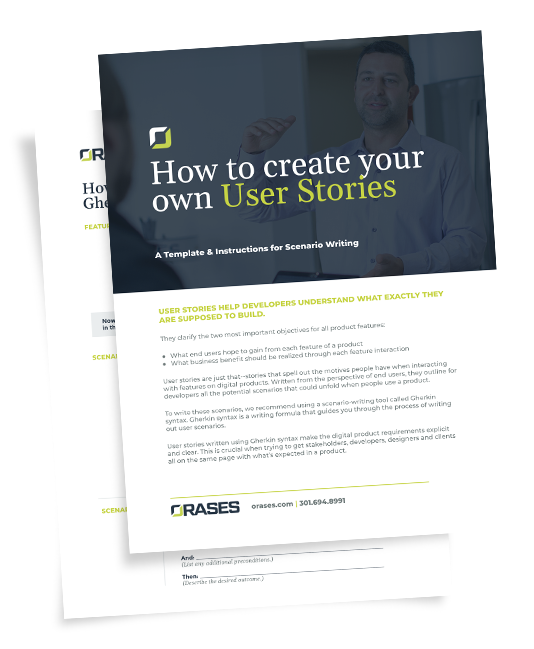Updated on February 29, 2024
Requirements gathering, also known as requirements elicitation, is the practice of defining software development requirements. This process involves a variety of activities, such as acquiring business requirements from relevant stakeholders to better understand user needs, codifying the data in the form of user stories and ensuring that all parties are on the same page regarding the project being built. Requirements gathering is often overlooked, especially when timelines are tight and budgets are stretched thin. However, disregarding the requirements gathering process can jeopardize expectations and leave room for error. Thus, understanding how to gather requirements for a software project is critical to success for both the vendor and the organization receiving the product.
Key Takeaways
- Essential Process: Requirements gathering, also known as requirements elicitation, is important for defining software requirements, ensuring understanding between stakeholders, and avoiding misunderstandings throughout the project.
- Functional vs. Non-Functional: Understanding the distinction between functional and non-functional requirements helps in categorizing and addressing different aspects of the software’s functionality and performance.
- Importance of Documentation: Requirements documentation serves as a blueprint for both businesses and clients, providing clarity on project progression, expectations, and exclusions to avoid dissatisfaction and miscommunication.
- Collaborative Approach: Techniques such as interviews, questionnaires, prototyping, and workshops facilitate effective requirements gathering, ensuring stakeholders’ needs are comprehensively understood and addressed.
- Five Steps of Requirements Gathering:
- Identify the Reason for Change
- Remove Language Ambiguity
- Check for Corner Cases
- Create User Stories
- Write an HTD for Each User Story
Functional vs. Non-Functional Requirements in Software Development
Requirements can be broken down into two main types: functional and non-functional.
Functional requirements refer to a product’s functionality, including its usability, capabilities, operations and features as they relate to the product’s intended purpose. Functional requirements are often referenced in Functional Requirements Documentation (FRD) which provides an in-depth outline of these requirements.
Non-functional requirements include anything that is not related to a product’s functionality such as its stability, performance, security and technical specifications. Although functional and non-functional requirements are directly affected by one another, non-functional requirements do not always correspond directly to functional requirements.
Importance Of Requirements Management
 Gathering requirements for software development is important for several key reasons. First, requirements documentation directly provides businesses with a point of reference that can be used to help document the progression of a project, its components and its implementation.
Gathering requirements for software development is important for several key reasons. First, requirements documentation directly provides businesses with a point of reference that can be used to help document the progression of a project, its components and its implementation.
Requirements documentation is also beneficial to the client and serves as a blueprint to help them better understand what they can expect as the project progresses. In addition to outlining expectations, requirements management planning also outlines what clients should not expect. An “exclusions” or “assumptions” section can help reduce these risks and prevent client dissatisfaction.
The process of gathering requirements is necessary to avoid misunderstandings and achieve success. The software development team must fully understand each requirement of the project, regardless of its complexity. To gain a solid understanding of what the client wants, the development team is tasked with asking the little questions.
The Five Steps Of Requirements Gathering in Software Development
The following five steps can help custom software developers and clients better manage the requirements gathering process.
1. Identify The Reason For Change
There is usually a reason why a client reaches out to a software development team for assistance. Businesses often face certain challenges that can have a negative impact on operations or performance. Developers must take the time to understand the analog process and the challenges the business currently faces. It is also important to consider how a feature will help businesses and reduce current challenges.
2. Remove Language Ambiguity
Clients may not always use the correct terminology when explaining their vision or the features they would like to see in a project. This can create confusion and, in some cases, result in a project that the client is not completely satisfied with. The first step can help eliminate much of this misunderstanding; however, developers may need to take extra steps for greater clarification.
3. Check For Corner Cases
Corner cases refer to scenarios in which a feature does not work as expected. Although these circumstances are not common, they can happen and will quickly impact the rest of the system. It is essential to discuss each requirement in detail to prevent these types of interruptions.
4. Create User Stories
User stories help capture relevant information when documenting requirements. It is not necessary to create a “perfect” story but rather to discuss what the feature should accomplish and how it aligns with business goals. The software development team should assist with the creation of user stories before they are saved in the project management system.

Download E-Book
5. Write An HTD For Each User Story
The last step in the process involves writing a “How to Demo” (HTD) for each user story. An HTD is designed to outline the steps needed to demonstrate to the client and developer that the requirement has been met to the client’s satisfaction. This involves showing that all ambiguous language has been removed and illustrating how it works.
Reach Out To A Software Development Expert
The process of gathering requirements for software development is not as straightforward as simply asking stakeholders what they want to see from a system. This is because stakeholders do not always realize what possibilities exist and their responses may be limited. Instead, there are a variety of techniques that can be used to gain more feedback such as interviews, questionnaires, user observation, brainstorming sessions, workshops, role playing, prototyping and use cases and scenarios.
Requirements gathering is, without a doubt, one of the most essential components of any project and can provide value in numerous ways. When implemented correctly, this process can help ensure success in reaching the expected goals. To learn more about the process of gathering requirements for software development or to speak with a software development professional, reach out to the team at Orases by calling 301.756.5527 or by requesting a consultation online.




